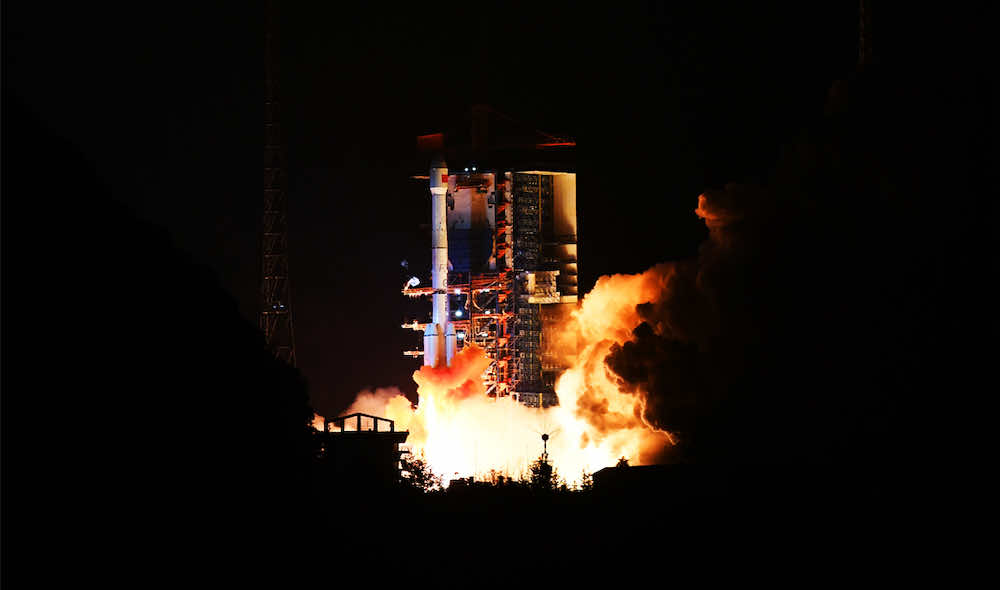
China succeeded in its 50th orbital launch attempt of the year Dec. 13, when a Long March 3B rocket delivered a Tianlian data relay satellite to orbit on a mission to link ground control with the Chinese space station and other spacecraft.
The launch reinforced the Tianlian fleet, similar to NASA’s constellation of Tracking and Data Relay Satellites, providing video, data, and audio communications with China’s space station in low Earth orbit.
A 185-foot-tall (56.5-meter) Long March 3B rocket carried the Tianlian 2-02 satellite aloft from the Xichang launch base in Sichuan province, located in a mountainous region of southwestern China. Launch occurred at 1609 GMT (11:09 a.m. EST) on Dec. 13, according to the China Aerospace Science and Technology Corp., or CASC.
CASC is China’s top state-owned aerospace contractor that oversees large swaths of the country’s space program.
Assisted by four hydrazine-fed strap-on boosters, the Long March 3B fired off its launch pedestal and headed east from Xichang, dropping its spent rocket casings over Chinese territory. After the boosters, first stage, and second stage completed their work, a cryogenic hydrogen-fueled third stage ignited two times to inject the Tianlian 2-02 spacecraft into its planned geostationary transfer orbit.
Tracking data published by the U.S. military showed Tianlian 2-02 deployed in an egg-shaped transfer orbit stretching from an altitude of 112 miles (181 kilometers) to 22,260 miles (35,825 kilometers). The rocket released the spacecraft into an orbit with a track tilted at an angle of 27.1 degrees to the equator.
The Tianlian 2-02 spacecraft will use its on-board engine to maneuver into a circular orbit more than 22,000 miles over the equator in the next few weeks. There, it will join a network of Tianlian data relay satellites linking mission controllers with the Chinese space station and other Chinese spacecraft in low Earth orbit.
Before the Tianlian satellites, Chinese controllers relied on a patchwork of ground stations to link with space missions. Those only provided partial coverage, leaving mission controllers out of contact with satellites and astronaut crews for long periods of time.
The new satellite is the second in a new generation of larger, more powerful data relay craft. The first Tianlian 2-series satellite launched in 2019.
China launched five first-generation Tianlian 1 relay spacecraft in 2008, 2011, 2012, 2016, and in July of this year. The fifth Tianlian 1 satellite launched in July was the last of its type to be built by China.
Compared to the earlier Tianlian 1 satellites, the Tianlian 2 satellites will provide faster data transmission rates between ground stations and spacecraft in low Earth orbit, and will be able to connect to more spacecraft at the same time, Chinese state media reported in 2019.
The Tianlian 2 satellites are based on the DFH-4 spacecraft bus produced by the China Academy of Space Technology.
Email the author.
Follow Stephen Clark on Twitter: @StephenClark1.
